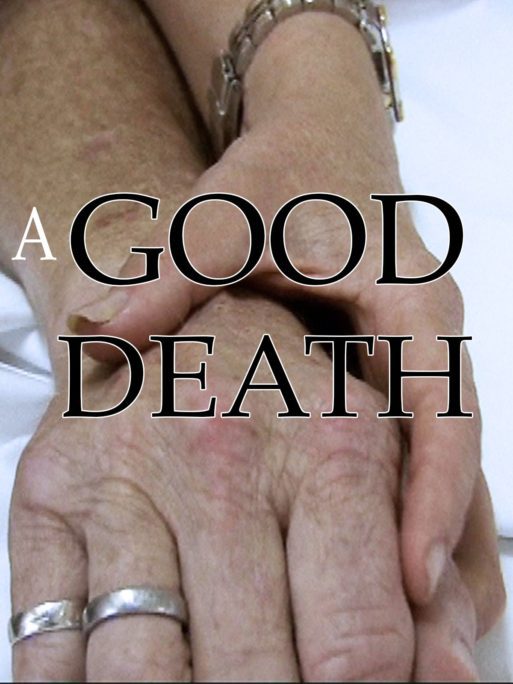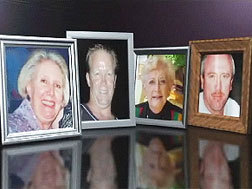 “A Good Death” (2010) is an Australian documentary film about four cancer patients. The film revolves around the patients, their loved ones and the palliative care team/unit that tends to them.
“A Good Death” (2010) is an Australian documentary film about four cancer patients. The film revolves around the patients, their loved ones and the palliative care team/unit that tends to them.
The short movie is, like most documentaries about terminal illness, tough to watch at times. It’s emotional, and we know going into it that these four patients will likely die by the end of the film.

Credit: alliancehospice.com
The Sacred Heart Palliative Care Unit at St. Vincent’s Public Hospital in Sydney, Australia is not your typical hospital setting. Two resident cats roam the hallways. Patients are allowed to smoke, and families can stay there as long as they please.
It’s clear from the beginning that the palliative care center’s objective is to soothe its patients. Most residents have come to terms with their illness and what’s happening to them. But the sometimes unbearable pains that accompany cancer don’t quit just because someone is aware of their impending mortality.
“A Good Death” provides a great look into the emotional journey that accompanies both a patient and their loved ones’ experience with cancer. It’s also a behind-the-scenes tour of a palliative care center for those who are not familiar with the practice. Interview clips featuring doctors and nurses from the unit embody the priority of palliative care: to comfort patients, not cure them.
“I tell my patients that, ‘I know I cannot cure you. But I can make you feel better,’” says Dr. Richard Chye, Director of Palliative Care at Sacred Heart. He explains that most doctors in an acute hospital setting will tell their patients, “I cannot cure you,” and leave it at that. But in a palliative care setting, doctors do not only concern themselves with curing the disease, but also focus on easing the patient’s pain.
“A Good Death” could be seen as a plea to local governments to invest more in palliative care centers. The film takes place entirely in Australia, but its positive view of palliative care is applicable to all parts of the world. For instance, the economic benefits of palliative care vs. intensive care are touted. The possibility of a “peaceful death” via palliative care is discussed, and the positivity a palliative care setting can bring patients is quite uplifting.
Cancer Affects Anyone
The four patients we meet in “A Good Death” are all quite different. Though they are all white and adults in middle to old age, each person’s life and circumstances are diverse, exemplifying the fact that cancer plays no favorites.

From left to right: Sandy, Darryl, Norma and John
Credit: films.com
We first meet Norma Andrews, an 80-year-old with bowel cancer. Doctors discovered her cancer at a very late stage, and we’re introduced solely to her daughter, Patty. Euthanasia is discussed at one point in the film, and, were medical aid in dying legal in Australia at the time, Patty believes Norma would have opted for it.
Darryl Calver, 46, had pancreatic cancer. He and his partner, Margie, had plans to travel the world together, but his cancer prevented them from pursuing their dream. Darryl’s cancer spreads the quickest of the four patients, and his deterioration is the most striking.
The third patient we meet is Sandy Riches. She was 63 when “A Good Death” was released in 2010. She and her husband had celebrated their 40th wedding anniversary around the time the documentary premiered. Sandy seemed more concerned about how her husband would get along without her than the cancer itself, and she offers numerous light-hearted quips throughout the film.
Finally, we meet John Peart, 53, who also suffered from bowel cancer. We are introduced to his wife and two teenage children. It’s with the Peart family that we get the most intimate look into the havoc a cancer diagnosis can wreak on a young family. His intense physical pain is also the most examined of the four subjects.
Each of the four patients’ stories from “A Good Death” teach us different lessons regarding cancer treatment and palliative care. I’d recommend this short documentary to anyone who is unfamiliar with palliative care, its purpose and the positivity it can bring to families during the toughest of times.

 “A Good Death” by Deborah Masters and Matthew Carney
“A Good Death” by Deborah Masters and Matthew Carney


 John Mulaney’s “Funeral Planning” on Netflix: No Real Plan
John Mulaney’s “Funeral Planning” on Netflix: No Real Plan

 Composting Bodies Is Now Legal in a Dozen States
Composting Bodies Is Now Legal in a Dozen States














